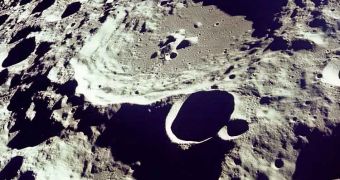According to researchers from the Oxford and Aberdeen universities, about 1.2 billion years ago, a relatively large object entered Earth's atmosphere and fell towards the regions of north-west Scotland, to create the biggest meteorite impact on the territories of the United Kingdom. The exact location of the crater created by the meteorite is thought to lie somewhere near the town of Ullapool, as scientists found evidence of debris ejected during the meteorite crater formation.
Ken Amor from the University of Oxford and co-author of the study revealing the new discovery, said: "It there had been human observers in Scotland 1.2 billion years ago they would have seen quite a show. The massive impact would have meted rocks and thrown up an enormous cloud of vapor that scattered material over a large part of the region around Ullapool. The crater was rapidly buried by sandstone which helped to preserve the evidence."
Material ejected from the impact site could have been thrown away at distances as long as 25 kilometers.
Amor adds: "Chemical testing of the rocks found the characteristic signature of meteoritic material, which has high levels of the key element iridium, normally only found in low concentrations in surface rocks on Earth." Microscopic investigations of the rocks put in evidence parallel fractures which could have been created through a meteorite impact only.
In 2006, scientists began studying the unique rock formations starting with the presumption that they were created by volcanic activity, but they soon realized that there was no other evidence of volcanic activity in that specific area, neither volcanic vents nor volcanic sediments. They then started thinking about the possibility that the found debris could have been produced by a meteorite impact.
"The type of ejected deposit discovered in North West Scotland is only observed on planets and satellites that possess a volatile rich subsurface, for example, Venus, Mars and Earth," says PhD student of University of Aberdeen, Scott Thackrey. Each crater created by a meteorite impact presents valuable information regarding the atmospheric and surface processes which take place just after the impact, was Thackrey's conclusion.
Looking away from our planet, similar impacts could help us understand what kind of effect such events would have had on the ancient surfaces of other rocky planets, like Mars for example.

 14 DAY TRIAL //
14 DAY TRIAL //